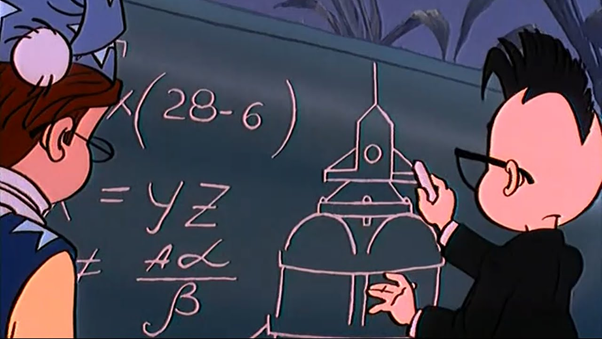
As Bill Emrich, one of NASA's lead nuclear fuel rocket engineers, said: “Elon Musk and others want to get people to Mars and establish a colony there. If you want to go to Mars and leave people on Mars, you can do it with chemical rockets. It will be a difficult but possible path. But if you want to bring people back to Earth, you are almost forced to use nuclear missiles. And at NASA we are more interested in bringing people home. "
The idea of nuclear rocket engines, which originated in the 1940s, seemed to many to be extremely attractive, since would make interplanetary travel a daily routine for us. The topic turned out to be difficult, and none of the world powers has so far been able to boast of a really working prototype of a rocket with a nuclear installation ... Although it seems, not everything is so hopeless: NASA has prepared interesting news for us about its new developments! Now about everything in order:
Fuel decides

Nuclear reactors can produce the energy and thrust needed to quickly deliver a large spacecraft to Mars and, if desired, even beyond. It is important to note that nuclear engines are intended only for interplanetary travel, and not for use in the Earth's atmosphere: chemical rockets take the device out of low-Earth orbit and only then the nuclear propulsion system will work.
The challenge was to make these nuclear engines safe and lightweight. As NASA Chief Engineer for Space Technology Management Jeff Sheehy said, "The key technology that needs to be improved is fuel." The fuel needs to be able to withstand ultra-high temperatures and volatile conditions in a nuclear thermal engine. Two US companies recently announced that their fuel is reliable enough for a safe, compact and high-performance reactor. In fact, one of these companies has already provided NASA with a detailed concept design.

A nuclear thermal propulsion system uses the energy released from nuclear reactions to heat liquid hydrogen to about 2,430 ° C, about eight times the core temperature of nuclear power plants. The propellant expands and is ejected into the nozzles at great speed. This could provide twice the thrust per fuel mass as a chemical rocket, allowing nuclear-powered ships to travel longer and faster. In addition, once at a destination, be it Saturn's moon Titan or Pluto, the nuclear reactor can switch from a propulsion system to a power source, allowing the craft to send back high-quality data for years.
To get enough thrust from a nuclear missile, weapons-grade highly enriched uranium was previously required. Low-enriched uranium fuel used in commercial power plants would be safer to use, but it can become brittle and degrade when exposed to high temperatures and chemical attack from highly reactive hydrogen.

Three months - and you are on Mars
The Seattle company Ultra Safe Nuclear Corp. Technologies developed the concept of a new Nuclear Thermal Propulsion (NTP) engine and delivered it to NASA. Experts promise that their development will make it possible to reach Mars in just three months. According to the company's space director, Michael Eads, their concept engine is much safer than its predecessors and can produce twice the specific impulse of its chemical counterparts. Their fuel feature will be that it will have an all-ceramic microcapsule for powering the engine reactor, and will also be based on uranium with an enrichment of above 5% and below 20%, which manifests itself significantly better than fuel for power reactors, but “cannot be used for nefarious purposes, so it greatly reduces the risk of exploitation, ”says Eads.The company's fuel contains microscopic particles of ceramic-coated uranium fuel dispersed in a zirconium carbide matrix. The microcapsules trap the radioactive fission byproducts inside, allowing the heat to escape.
Another company, BWX Technologies (Lynchburg, Virginia), also collaborates with NASA, in addition to developing designs using the above form of fuel, offers an alternative option: fuel enclosed in a metal matrix.
The two companies offer two different models for moderating the energetic neutrons from fission in order to maintain a chain reaction to avoid damage to the reactor structure. BWX places its fuel cells between hydride cells, and USNC-Tech's unique design includes a beryllium metal moderator. “Our fuel stays intact, withstands hot hydrogen and radiation, and does not absorb all of the reactor's neutrons,” Eads says.

USNC-Tech has already made small prototypes of equipment based on its new fuel and handed them over to NASA for testing.
Bibliography:
- GMT P. 23 D. 2020 | 16:00. Nuclear-Powered Rockets Get a Second Look for Travel to Mars - IEEE Spectrum [Electronic resource]. URL: spectrum.ieee.org/aerospace/space-flight/nuclear-powered-rockets-get-a-second-look-for-travel-to-mars
- Nuclear Rockets the Future for Space Missions to Mars - ASME [Electronic resource]. URL: www.asme.org/topics-resources/content/the-future-of-nuclear-rockets-for-space-travel